Are Fresh Fruits and Vegetables Safe to Eat?

When it comes to eating fruits and vegetables, do you let the following dictate your choices:
- Choosing organics over conventionally grown produce?
- Choosing locally grown over large commercial farms?
- Following the Dirty Dozen list and avoiding certain fruits and vegetables?
If you said yes to any of the following, keep reading along to find out why you may be myth-taken with your perceptions of produce and purchase habits. Let’s chat about facts, not fear, when it comes to the safety of our produce. This past September I had the opportunity to see how fruits and veggies are grown, picked, and packaged firsthand and learn about everything that goes into the production of our produce. And now I’m excited to pass that knowledge on to all of you.
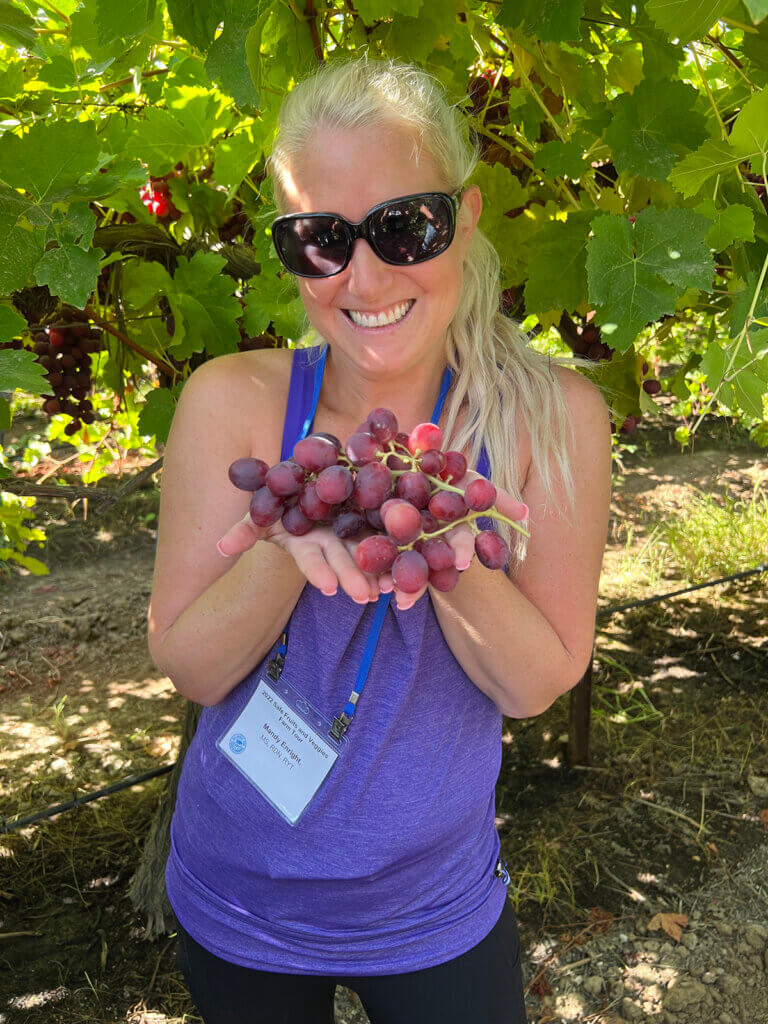
Disclosure: I was invited to attend the “Safe Fruits and Veggies Farm Tour” which was paid for by the Alliance for Food & Farming and sponsored by California Citrus Mutual, California Fresh Fruit Association, California Table Grape Commission, International Fresh Produce Association, Pear Bureau Northwest, and Western Growers Association. I was compensated for my time to write this post, but as always, opinions are my own.
Americans Are Falling Short on Fruits & Veggies
Whenever I deliver worksite wellness presentations, I always emphasize the importance of eating more fruits and vegetables. It may sound so basic, but it is the area where most Americans are falling short. In fact, most Americans at best consume one fruit and/or one vegetable per day according to the most recent US Dietary Guidelines and State of the Plate research. Only 1 in 10 Americans eat enough fruits and vegetables each day, according to the Centers for Disease Control. Why do we put so much emphasis on these guys? Because they are the best bang for your buck!
- Low in calories
- High in nutritional value (including vitamins, minerals, antioxidants, and phytonutrients)
- High in fiber (key for weight management, gut health, heart health, and more)
- Low cost compared to animal proteins
And yet… despite everything we know about WHY we need to eat more fruits and veggies, there’s still a disconnect with people actually doing it. And part of that stems from too many misconceptions about the safety of food grown in the United States.
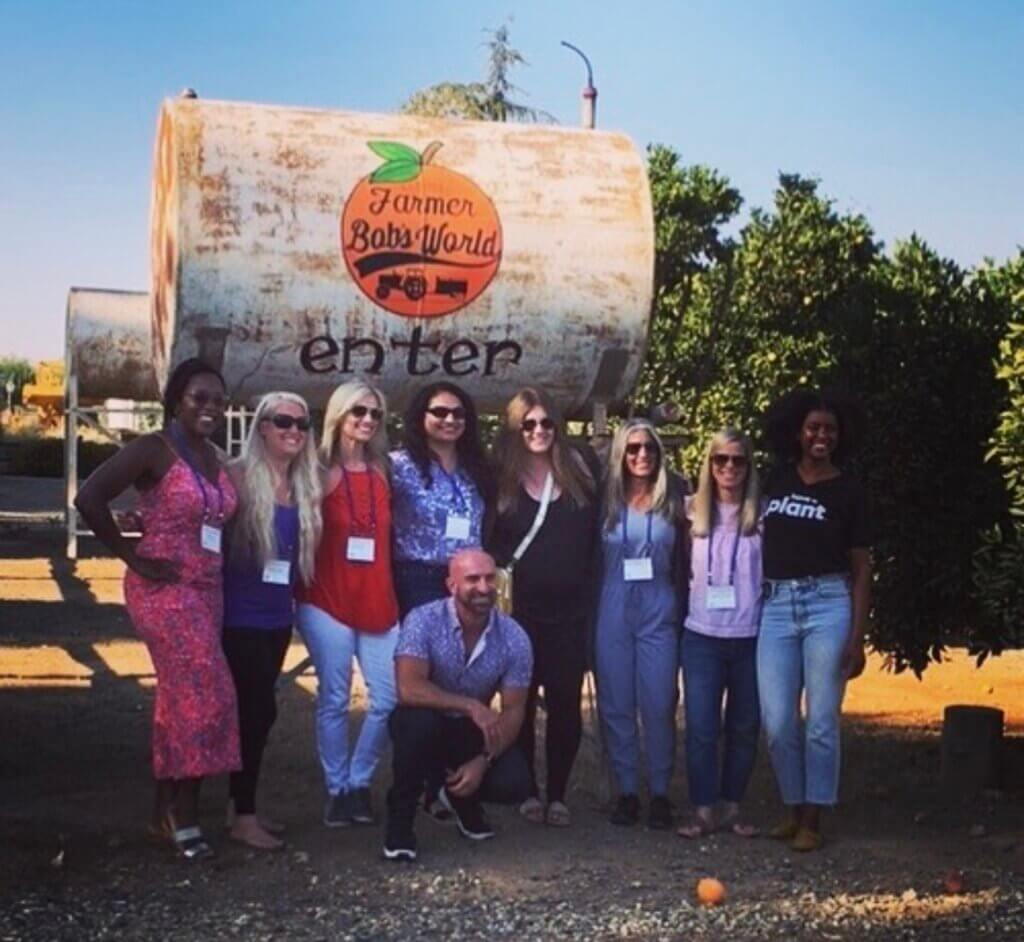
San Joaquin Valley: California Farming Hub
This past September, I had the opportunity to do a farm tour around California visiting several key produce farms in the San Joaquin Valley. This is the region where the majority of our citrus, tree fruits, and table grapes are grown, among other key crops. Throughout the tour, we had a chance to speak with the farmers about their experiences and challenges getting food from the farms into consumer’s carts and ultimately being consumed.
Some of the biggest challenges we heard included labor shortages, weather conditions (we were there right after a major heat wave had hit California), and water availability.
At the end of the day remember this: farming is a FAMILY BUSINESS! Not only are these farms run with the utmost care, but the foods being grown and produced are always grown with safety being the #1 priority. In fact, fruit and vegetable farmers’ first consumers are their own families, so food safety always comes first. Farming truly is a labor of love. As a girl who was raised in a farm family in NJ, I can say first-hand this is all 100% accurate.
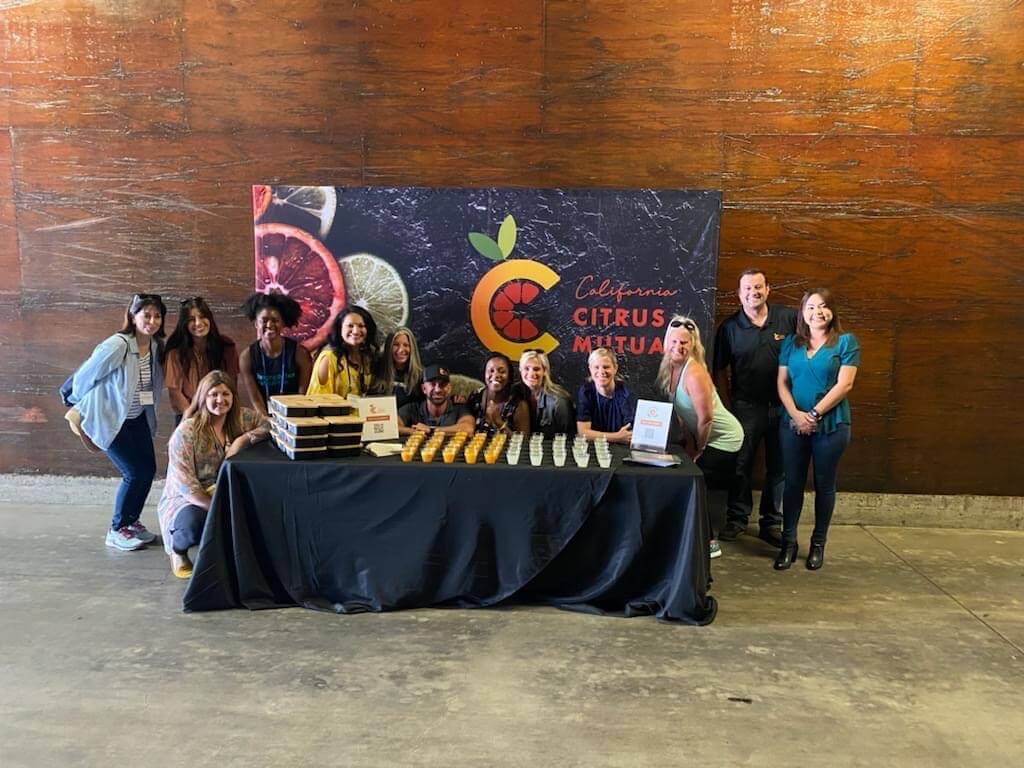
California Citrus
We had the opportunity to visit a citrus packing plant and a citrus grove during our tour to see how the fruit gets from the tree all the way to the stores (see video below). Here’s some facts about California citrus:
- California is the largest producer and distributor of citrus in the US (yes, even more than Florida)
- Top orange varieties grown in California include navel, mandarin (including those halo & cutie varieties), and Valencia
- Valencia oranges are best for juicing
- Seedless citrus is the result of covering the citrus trees with netting to keep bees away so they don’t pollinate the blooms, which in turn prevents seeds from growing
- It can take a citrus tree 7-10 years before you actually start to see a profit from that one tree
- Citrus only make 1-2 cents profit PER POUND
- Citrus trees can live and produce for hundreds of years
- Chick-Fil-A is the top consumer of California lemons, which are used in their lemonade
- Citrus greening (HLB) has not been hard-hitting on California citrus as it has to the Florida citrus industry – measurements are in place to keep the Asian citrus psyllid away
Check out this video to see a citrus packing plant in action:
Tree Fruit Farms
Next up was checking out tree fruit orchards, which includes stone fruits such as peaches, plums, and apricots. Fun Fact: California is the largest producer of peaches (not Georgia, contrary to popular belief).
One of the farms we visited, HMC Farms, has recognized that labor is their main cost of concern due to the dwindling workforce (they are not even sure if the current workforce will be around in 10 years) and fruit spoiling as a result of not being picked in time. To help combat these concerns, HMC has invested significant time and effort into agricultural technology. These include:
- Using platforms instead of ladders
- Optical machines to determine sugar levels of fruits (and if they’re ready to be picked)
- Self-driving carts
- Using robots to do the harvesting
Check out some of the amazing ag technology they are utilizing!
Then we were treated to a taste-off of some new tree-fruit breeds. “Plant Breeding” develops new plant varieties for food, feed, fuel, and more. Hear directly from a plant breeder’s mouth how it works:
Plants that are bred are NOT genetically modified! There is in fact a difference:
They are simply taking the best characteristics of certain plants and enhancing them to do things such as improve taste, longevity, and ability to withstand certain elements while growing. Plant breeding has been around for hundreds of years. If you’ve tried any newer stone fruit varieties such as plumcots, plopple, or plum cherry, then you’ve had a new fruit that resulted from plant breeding.
Check out some of the new varieties we tried:
California Table Grapes
Our second day in the San Joaquin Valley was primary spent immersed in all things table grapes. There are 80+ varieties of table grapes out there including green, red, and black, along with seeded and seedless varieties (although seedless is more preferred in the US). In addition to picking the grapes, most of the packing is done in the fields as well, which is still the most cost-effective option.
Here’s some greatest hits from our visit to the table grape vineyards, along with a tour and dinner in a citrus grove:
Unlike stone fruits and citrus, which can continue to ripen after being picked, grapes have to be picked at their peak ripeness. Which can mean a lot of labor is involved. In fact, I never realized HOW INVOLVED grapes are between picking and packing. See what I mean when I learned how grapes are pruned off the vines:
View this post on Instagram
Grapes are safe to eat directly from the vine. In fact, ALL of the fruit farms we visited allowed us to eat the fruits directly off the trees/vines right there in the field. That is how safe our food and agricultural practices are here in the US.
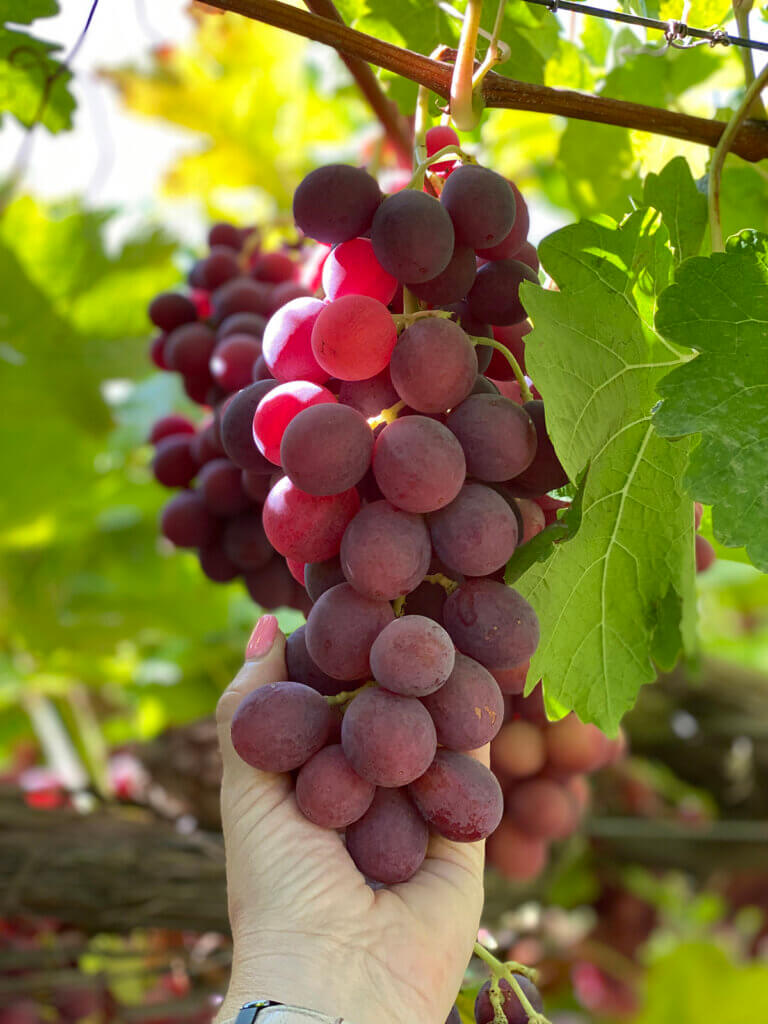
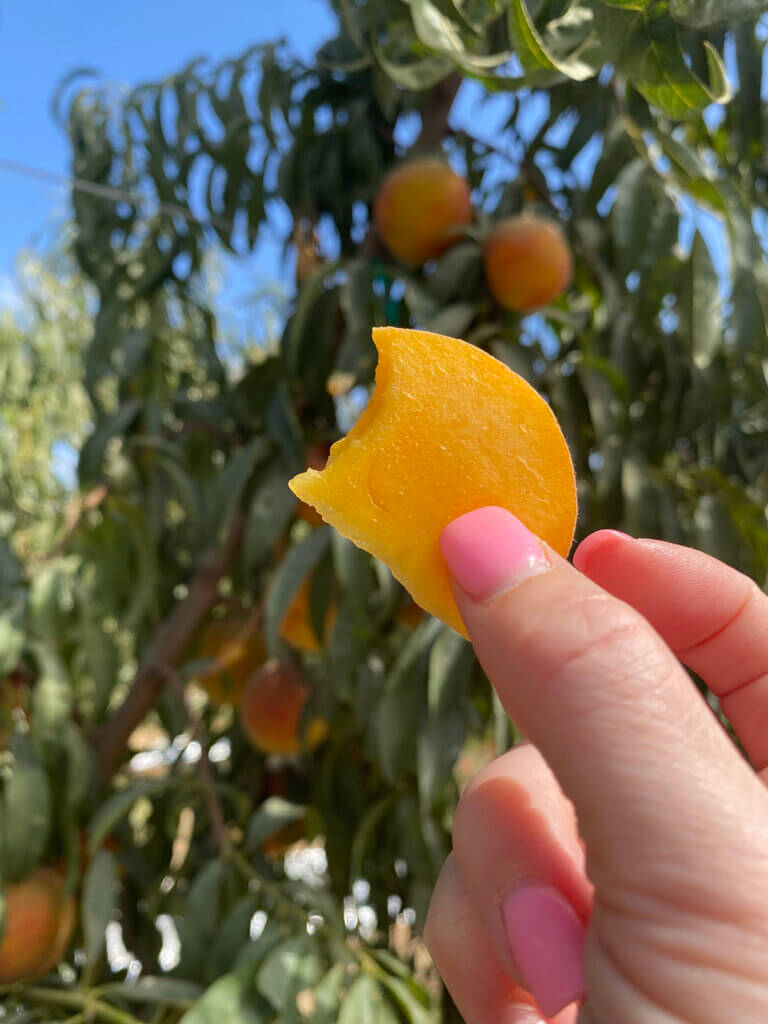
The Dirty Dozen List: Doing Produce & Farmers Dirty
You’ve probably heard of the Dirty Dozen list – that obnoxious list that comes out every March from the Environmental Working Group (EWG) telling the American public about foods are potentially high in pesticides. HOWEVER… the claims in these reports about pesticide residue continues to be suspect (more on that below).
Even worse… this list does a major disservice to the produce industry because people interpret this list as they shouldn’t eat certain fruits or vegetables… or shouldn’t eat fruits or veggies AT ALL! EEEEK 😱😱😱!!!!! Not only is this drastically reducing fruit and vegetable consumption, it impacts our overall health AND the farming industry.
Hear what a farmer has to say both about the safety of our produce AND their thoughts on the Dirty Dozen list:
Is Organic Better than Conventional Produce?
In short, no. Both conventional and organic produce have the same nutrients and nutritional value. Organics won’t make you lose weight or immune to cancer, heart disease, or inflammation any more than conventional produce can.
For farms, growing organic produce is EXPENSIVE. In fact, it takes 3 years just for a farm to be able to start selling organic produce. That means they’re doing the work growing and maintaining that produce to one day be certified organic without any profits for at least 3 years – ouch!
The biggest misconception is that organics are not grown with any pesticides. This is FALSE! Organics DO USE pesticides via organic methods – read more about organic produce regulations. However, there are some questions about their effectiveness. Conventional pesticides usually only need to be sprayed once a season, while organic pesticides may need to be sprayed 3-4 times a season – that cost adds up! And did you know that many farms utilize organic farming practices, such as mating disruptors, predatory insects, or sticky traps to keep pests away. They just opt not to go through the hassle involved in becoming a certified organic farm, as it’s actually more of a high-risk farming practice that doesn’t necessarily come with a high reward. Learn more about conventional pesticides and regulations.
Decades of nutritional research shows that increasing consumption of ANY AND ALL fruits and vegetables (conventional or organic) can improve immunity, prevent diseases, and increase lifespan. At the end of the day, buy what fits your budget, but know that organic is not necessarily superior in quality, nutrition, health benefits, or taste.
CHECK OUT MY TIPS FOR CUTTING FOOD COSTS
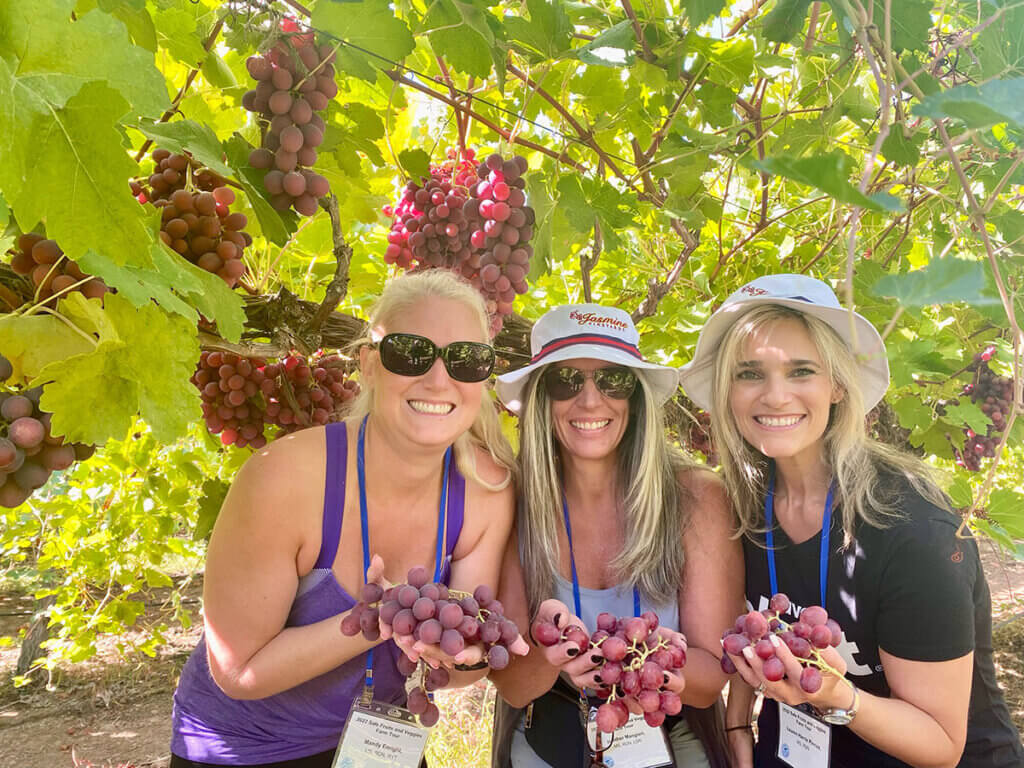
But Really… Are Fruits & Veggies Safe to Eat???
Farmers, researchers, and dietitians can’t be wrong when they continue to recommend that you need to eat more fruits and vegetables because their benefits far outweigh any potential risks.
USDA and FDA data shows pesticide residues are at levels well below safety tolerances established by the EPA and “pose no safety concern,” if residues are present at all on foods. Pesticide residues are so low, if present at all, a child could eat 100’s to 1,000’s of servings of a fruit or veggie in a day and not have any health effects from residues.
Need more proof? Check out the Pesticide Residue Calculator to see how much produce you’d ACTUALLY have to consume to experience any adverse effects from pesticide residues. I checked it out for myself with strawberries, which according to the EWG’s Dirty Dozen list is the highest in pesticide residues. According to the calculator, I’d need to consume 453 CUPS of strawberries before I’d experience any sort of adverse effect.
The best way to ensure your safety is to wash your produce and hands before consuming. According to the FDA, washing fresh produce before eating is a healthful habit. You can reduce and often eliminate pesticide residues if they are present on fresh produce by washing them under running tap water.
CHECK OUT MY GUIDE FOR MAKING YOUR OWN PRODUCE WASH

About the Alliance for Food & Farming
The Alliance for Food & Farming (AFF) is a nonprofit organization formed in 1989 which represents organic and conventional farmers of fruits and vegetables. Research is conducted by the AFF in conjunction with experts in the fields of toxicology, risk analysis, nutrition, health, and farming. Visit Safe Fruits and Veggies for more information and research on safety practices for farming, consumption, and to view the Pesticide Residue Calculator mentioned above.
DO YOU FEEL CONFIDENT IN THE SAFETY OF FRUITS & VEGGIES GROWN IN THE US?
HOW WILL YOU DO YOUR PART TO SUPPORT THE FARM INDUSTRY?
WHAT WILL YOU DO TO CONSUME MORE FRUITS & VEGGIES?
SOUND OFF IN THE COMMENTS!

